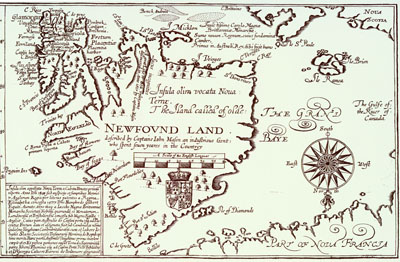Browse "Places"
-
Article
CTrain
CTrain is a light rail transit system in Calgary, Alberta. It is operated by Calgary Transit, a public transit service owned by the City of Calgary and operated through its Transportation Department. Service began on the initial downtown transit corridor and south line in 1981. It expanded to northeast Calgary in 1985, to the University of Calgary in the city’s northwest in 1987 and to the city’s west side in 2012. Most of its route and stations are at surface level. Calgary Transit operates the CTrain in conjunction with an extensive network of bus routes. Through equivalency purchases of wind-generated electricity, it has been entirely wind-powered since 2001. Its two separate lines comprise 45 stations, 118.1 km of track, and an average daily ridership of 312,300 (2018).
"https://d2ttikhf7xbzbs.cloudfront.net/media/media/b027d2ab-b82a-4141-b51c-110cf056a16a.jpg" // resources/views/front/categories/view.blade.php
https://d2ttikhf7xbzbs.cloudfront.net/media/media/b027d2ab-b82a-4141-b51c-110cf056a16a.jpg
-
Collection
Acadian Heritage
This collection explores the rich heritage of the Acadians through articles and exhibits, as well as quizzes on arts and culture, history and politics, historical figures, and places associated with the Acadian people.
"https://d2ttikhf7xbzbs.cloudfront.net/media/media/0988fc77-c4b5-410f-8147-ffcf8bb53fa6.jpg" // resources/views/front/categories/view.blade.php
https://d2ttikhf7xbzbs.cloudfront.net/media/media/0988fc77-c4b5-410f-8147-ffcf8bb53fa6.jpg
-
Article
Cumberland
Cumberland, BC, incorporated as a village in 1958, population 3398 (2011c), 2762 (2006c). The Village of Cumberland is located on the east coast of Vancouver Island about 14 km south of COURTENAY and 93 km northwest of NANAIMO.
"https://development.thecanadianencyclopedia.ca/images/tce_placeholder.jpg?v=e9dca980c9bdb3aa11e832e7ea94f5d9" // resources/views/front/categories/view.blade.php
https://development.thecanadianencyclopedia.ca/images/tce_placeholder.jpg?v=e9dca980c9bdb3aa11e832e7ea94f5d9
-
Article
Cumberland House
The construction of Cumberland House in 1774 marked a change in HBC policy, which had hitherto expected Indigenous people to bring their furs to the bay posts to trade.
"https://d2ttikhf7xbzbs.cloudfront.net/media/media/ae69d3f2-aebe-4a53-b1a8-ddfebac57e3f.jpg" // resources/views/front/categories/view.blade.php
https://d2ttikhf7xbzbs.cloudfront.net/media/media/ae69d3f2-aebe-4a53-b1a8-ddfebac57e3f.jpg
-
Article
Cumberland Sound
Cumberland Sound is a major inlet, 300 km long, with an average width of 65 km, in the east coast of BAFFIN ISLAND. Its steep sides rise over 2125 m to glacier-covered uplands.
"https://development.thecanadianencyclopedia.ca/images/tce_placeholder.jpg?v=e9dca980c9bdb3aa11e832e7ea94f5d9" // resources/views/front/categories/view.blade.php
https://development.thecanadianencyclopedia.ca/images/tce_placeholder.jpg?v=e9dca980c9bdb3aa11e832e7ea94f5d9
-
Article
Cupids
Cupids, Newfoundland and Labrador, incorporated as a town in 1965, population 743 (2016 census), 761 (2011 census). The town of Cupids is located in southwest Conception Bay on the Avalon Peninsula, about 80 km west of St. John's. Originally known as Cupers Cove (1610), other early variants of the name include Cuperts Cove and Kibby's Cove. However, the name Cupids Cove appears quite early: Sir William Alexander referred to it by this name in his An Encouragement to Colonies (1624). No one knows the origin of the name, but it may be an anglicized version of a Spanish or Basque name.
"https://d2ttikhf7xbzbs.cloudfront.net/media/media/4cdbbbd0-441a-4bc7-b1bb-d46b1b94b893.jpg" // resources/views/front/categories/view.blade.php
https://d2ttikhf7xbzbs.cloudfront.net/media/media/4cdbbbd0-441a-4bc7-b1bb-d46b1b94b893.jpg
-
Article
Cypress Hills
Ranching became important in the area after the Canadian Pacific Railway arrived at MAPLE CREEK in 1883. Beginning in 1906, part of the Cypress Hills was protected as a federal forest reserve. RESOURCE RIGHTS were transferred to the provinces in 1930.
"https://d2ttikhf7xbzbs.cloudfront.net/media/media/ca373d61-2489-44ec-a604-201d64f5116e.jpg" // resources/views/front/categories/view.blade.php
https://d2ttikhf7xbzbs.cloudfront.net/media/media/ca373d61-2489-44ec-a604-201d64f5116e.jpg
-
Macleans
D-Day Vet's Memorial Centre Opens
GARTH WEBB recounts his fundraising odyssey with bemused fascination, as if luck had everything to do with it. But the story of how the D-Day vet generated $10 million to create a memorial and education centre celebrating Canada's contribution to the SECOND WORLD WAR belies his manner.This article was originally published in Maclean's Magazine on May 26, 2003
"https://development.thecanadianencyclopedia.ca/images/tce_placeholder.jpg?v=e9dca980c9bdb3aa11e832e7ea94f5d9" // resources/views/front/categories/view.blade.php
https://development.thecanadianencyclopedia.ca/images/tce_placeholder.jpg?v=e9dca980c9bdb3aa11e832e7ea94f5d9
-
Article
Dalhousie
Dalhousie, NB, incorporated as a town in 1905, population 3512 (2011c), 3676 (2006c). The Town of Dalhousie, the shire town of Restigouche County (since 1837), is located on New Brunswick's north shore at the mouth of the Restigouche River.
"https://d2ttikhf7xbzbs.cloudfront.net/media/media/0eeeb273-5c1d-4e2c-9fa2-9ea5b597137e.jpg" // resources/views/front/categories/view.blade.php
https://d2ttikhf7xbzbs.cloudfront.net/media/media/0eeeb273-5c1d-4e2c-9fa2-9ea5b597137e.jpg
-
Article
Dalhousie Art Gallery
The Dalhousie Art Galleryis located in the Arts Centre of Dalhousie University in Halifax, Nova Scotia. Established in 1953 in a one-room area of the Arts and Administration Building on the university campus, it is the oldest public art gallery in Halifax.
"https://development.thecanadianencyclopedia.ca/images/tce_placeholder.jpg?v=e9dca980c9bdb3aa11e832e7ea94f5d9" // resources/views/front/categories/view.blade.php
https://development.thecanadianencyclopedia.ca/images/tce_placeholder.jpg?v=e9dca980c9bdb3aa11e832e7ea94f5d9
-
Article
Dalmeny
Dalmeny, Sask, incorporated as a town in 1983, population 1702 (2011c), 1560 (2006c). The Town of Dalmeny is located 30 km northwest of SASKATOON. It is apparently named after Dalmeny, Scotland.
"https://development.thecanadianencyclopedia.ca/images/tce_placeholder.jpg?v=e9dca980c9bdb3aa11e832e7ea94f5d9" // resources/views/front/categories/view.blade.php
https://development.thecanadianencyclopedia.ca/images/tce_placeholder.jpg?v=e9dca980c9bdb3aa11e832e7ea94f5d9
-
Article
Dark Harbour
Dark Harbour, located on the west side of GRAND MANAN ISLAND, New Brunswick, is the only suitable haven for fishing craft along the island's western shore, which is dominated by high cliffs. It is relatively isolated from the communities on the more hospitable eastern side facing the Bay of Fundy.
"https://development.thecanadianencyclopedia.ca/images/tce_placeholder.jpg?v=e9dca980c9bdb3aa11e832e7ea94f5d9" // resources/views/front/categories/view.blade.php
https://development.thecanadianencyclopedia.ca/images/tce_placeholder.jpg?v=e9dca980c9bdb3aa11e832e7ea94f5d9
-
Article
Darke Hall
Performance hall for the Conservatory of Performing Arts (formerly the Regina Conservatory of Music) at the University of Regina, as well as the Regina Symphony Orchestra (1929–70) and the Regina Musical Club (until 2007).
"https://d2ttikhf7xbzbs.cloudfront.net/Darke_Hall.jpg" // resources/views/front/categories/view.blade.php
https://d2ttikhf7xbzbs.cloudfront.net/Darke_Hall.jpg
-
Article
Dartmouth
Dartmouth, Nova Scotia, metropolitan area, population (including Cole Harbour) 96,165 (2021 census), 92,301 (2016 census). Dartmouth is located on the eastern side of Halifax Harbour in the Halifax Regional Municipality (incorporated in 1996).
"https://d2ttikhf7xbzbs.cloudfront.net/media/media/09ef6dac-263c-4515-92b7-f062849a532b.jpg" // resources/views/front/categories/view.blade.php
https://d2ttikhf7xbzbs.cloudfront.net/media/media/09ef6dac-263c-4515-92b7-f062849a532b.jpg
-
Article
Dartmouth Lakes
The Dartmouth Lakes are 25 separate lakes located within the city of Dartmouth, NS, across the harbour from Halifax. Formed by Pleistocene glaciation about 15 000 years ago, they range in area from 1 to 140 ha.
"https://development.thecanadianencyclopedia.ca/images/tce_placeholder.jpg?v=e9dca980c9bdb3aa11e832e7ea94f5d9" // resources/views/front/categories/view.blade.php
https://development.thecanadianencyclopedia.ca/images/tce_placeholder.jpg?v=e9dca980c9bdb3aa11e832e7ea94f5d9
